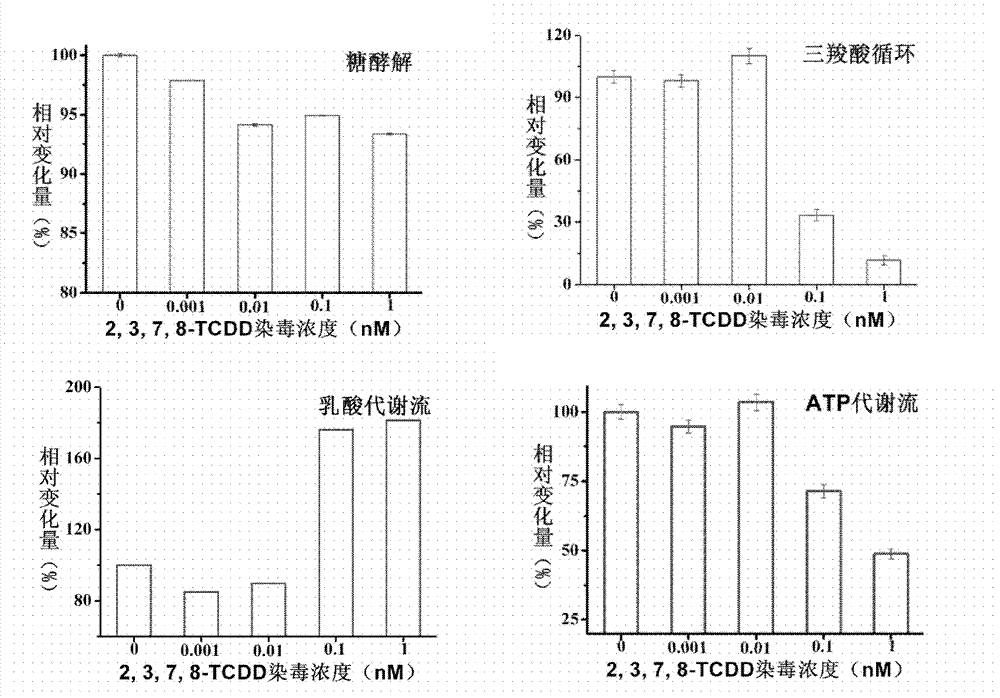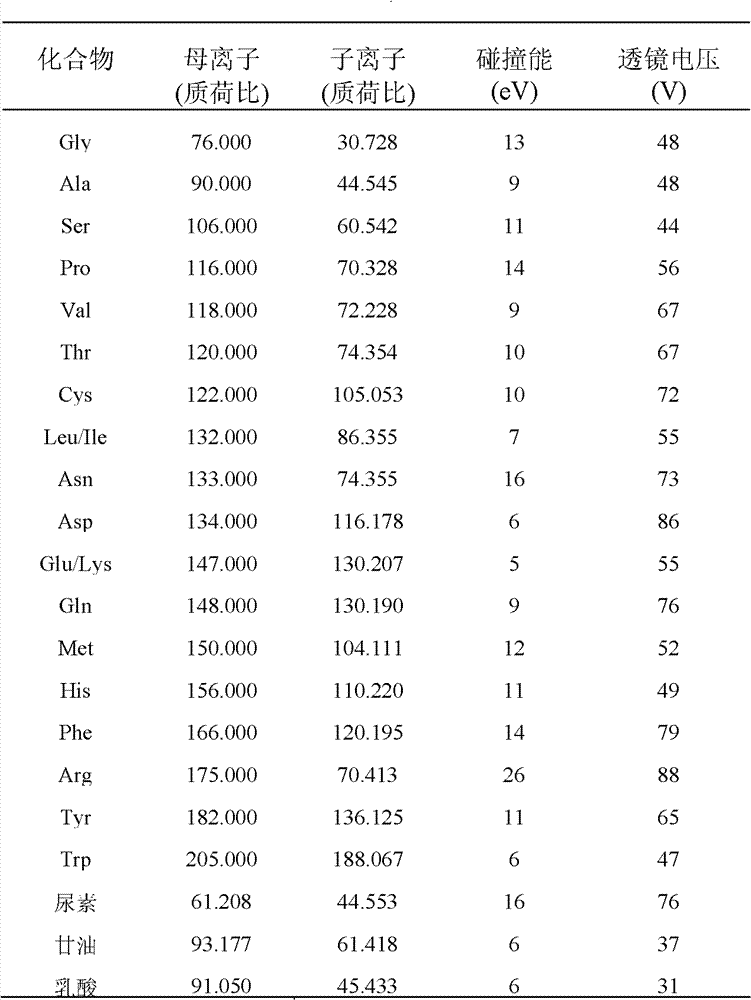Method for evaluating cytotoxicity of environmental pollutants by adopting HPLC-MS/MS (high performance liquid chromatography and mass spectrometry or mass spectrometry) and metabolic flux analysis system
A technology for metabolic flow analysis and environmental pollutants, applied in the field of environmental pollutant cytotoxicity assessment, can solve the problems of cumbersome test methods, limited information, long analysis cycle, etc., achieve short time-consuming, simple pre-treatment, shortened analysis the effect of time
- Summary
- Abstract
- Description
- Claims
- Application Information
AI Technical Summary
Problems solved by technology
Method used
Image
Examples
Embodiment 1
[0032] Liver cancer cell HepG2 cells in the logarithmic phase of growth were cultured in an incubator with cell culture medium DMEM, and cultured at 37°C for 48 hours. 2 air; pipette 10 μL of cell culture solution cultured for 48 hours into 1 ml of methanol and water mixture (volume ratio 90:10), vortex for 2 minutes, and then 15000 r min -1 After centrifugation for 5 min, the supernatant was passed through a 0.22 μm needle filter to obtain a metabolite extract. In this method, protein removal and sample dilution are completed in one step, and the sampling volume is only 10 μL. The results showed that the repeatability RSD of this method was less than 2.88%, and the recovery rate was 91.27%-115.07%.
Embodiment 2
[0034] The metabolite extract obtained in Example 1 was loaded and analyzed, and the HPLC-MS / MS analysis method was established. The liquid chromatographic column was selected as an Atlantis C18 reverse-phase chromatographic column (waters, 150mm × 2.1mm, 3.0 μm); the mobile phase A was Pure water, mobile phase B is methanol; the total flow rate is 200 μL min -1 , the temperature of the column oven was 20°C, and the injection volume was 10 μL. The gradient elution program was as follows: the volume of methanol used was 5% during 0-2 minutes; the amount of methanol was increased to 40% after 3 minutes and kept for 5 minutes; then the amount of methanol was reduced to 5% within 1 minute and then kept for 9 minutes.
[0035] The ionization mode of mass spectrometer is electrospray ion, and the sheath gas and auxiliary gas are both nitrogen. The mass spectrometry scan mode adopts selective reaction monitoring (SRM) detection mode, and data acquisition is carried out in positive i...
Embodiment 3
[0045] According to the bioinformatics analysis (KEEG) database of metabolic pathway, according to the metabolic flux balance simplified metabolic network of 23 kinds of metabolites obtained in embodiment 2, draw the metabolic network (metabolic contour map) of HepG2 cell, as figure 2 shown. The drawn metabolic network includes 71 cellular biochemical reaction pathways, including 5 biomacromolecular cellular synthesis reactions (nucleic acid-DNA and RNA, proteins, lipids, and organic carbon), 41 intracellular reactions, and 24 extracellular reactions. Protein synthesis comes from 20 kinds of amino acids, which are not marked in the figure. The unframed part in the figure is the material exchange between extracellular metabolites and the external environment. The metabolic pathways included in the entire metabolic network are: glycolysis, gluconeogenesis, pentose phosphate pathway, glycerol metabolism, tricarboxylic acid cycle, urea cycle, amino acid metabolism and lipid meta...
PUM
 Login to View More
Login to View More Abstract
Description
Claims
Application Information
 Login to View More
Login to View More - R&D
- Intellectual Property
- Life Sciences
- Materials
- Tech Scout
- Unparalleled Data Quality
- Higher Quality Content
- 60% Fewer Hallucinations
Browse by: Latest US Patents, China's latest patents, Technical Efficacy Thesaurus, Application Domain, Technology Topic, Popular Technical Reports.
© 2025 PatSnap. All rights reserved.Legal|Privacy policy|Modern Slavery Act Transparency Statement|Sitemap|About US| Contact US: help@patsnap.com



